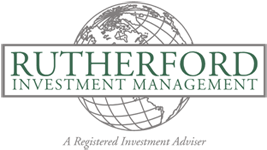Published May 5, 2023

U.S. equities, as measured by the S&P 500, were up 1.46 percent in April, and 8.59 percent year to date. Equity gains were largely due to a mistaken belief that the Fed will cut its benchmark target rate much sooner than previously anticipated. This helped growth sectors such as consumer discretionary, information technology, and communication services. The growth index outperformed value by the widest margin since data collection began in the mid-1970s. U.S. fixed income also posted gains in the first quarter, as markets lowered their Fed rate hike expectations. The two major yield curve spread recession indicators, the 10-year/two-year and 10-year/three-month, reached their most inverted levels this cycle and their lowest negative readings since 1981.
Some banks, with mismatched assets and liabilities, and therefore, income and expenses, cracked under pressure from the relentless rise in interest rates that started just a year ago. With the Fed’s raise on May 3, rates have risen five full points in this period. The failure of Silicon Valley Bank and Signature Bank and the fire sale of First Republic to JPMorgan Chase reminded investors of the importance of diversification, liquidity, and risk management.
We have seen what the reaction is to the possibility that the Fed will alleviate its inflation fight. After getting hammered by rising interest rates, the market jumped on the suggestion that inflation might be abating or that interest rates might be stabilizing and declining. The market is salivating over the possibility of lower rates. Investors must continue to be fully invested not to miss the moment when interest rates drop.
Fears of a recession weigh on the market. Yet the Dow Jones Transportation Average and the Philadelphia SOX (PHLX Semiconductor Sector index, which is up 18 percent this year) both exhibit strength. Consumer staples (up 3.4 percent in April and 5.9 percent over the past three months) and health care (up 2.5 percent in April) are both rallying this year. The market shows narrowing as a few stocks – Apple, Microsoft, Tesla and Nvidia – account for 88 percent of the market gain year to date. Earnings are better than expected.
Still, with GDP up 1.1 percent this year and spending for both goods and services strong this year, it is hard to see a recession looming, according to noted stock market analyst Ed Yardeni. JPMorgan Chase’s purchase of First Republic Bank added some stability to the banking sector and some support to the market.
Treasury Secretary Janet Yellen believes the Treasury may run out of money by June 1 if Congress doesn’t raise the debt ceiling soon. If the U.S. fails to pay its debt when due, we can expect catastrophic results.
The war in Ukraine continues to add pressure to the Fed’s inflation fight. The banking crisis has taught us the need for a well-diversified portfolio across industry sectors and for identification of the strongest companies within them. Growing businesses with strong balance sheets continue to attract investors’ interest.
Despite apparent growth in some areas, the economy seems stuck. The market has been range bound. Even after 10 interest rate raises in just over a year, the Fed seems bent on more. Chairman Jerome Powell, in his latest comments after another rate increase, made clear his intention to keep rates high to break the back of inflation. It is not clear that the Fed has yet done that. He threatens more rate increases to come. We are a long way from his goal of a 2 percent annual rate of inflation, so there is more pain to come. At this point it is uncertain when his resolve will weaken, if at all.
Investors should focus on high-quality stocks in a well-diversified portfolio.
William Rutherford is the founder and portfolio manager of Portland-based Rutherford Investment Management. Contact him at 888-755-6546 or wrutherford@rutherfordinvestment.com. Information herein is from sources believed to be reliable, but accuracy and completeness cannot be guaranteed. Investment involves risk and may result in losses.
The opinions, beliefs and viewpoints expressed in the preceding commentary are those of the author and do not necessarily reflect the opinions, beliefs and viewpoints of the Daily Journal of Commerce or its editors. Neither the author nor the DJC guarantees the accuracy or completeness of any information published herein.
